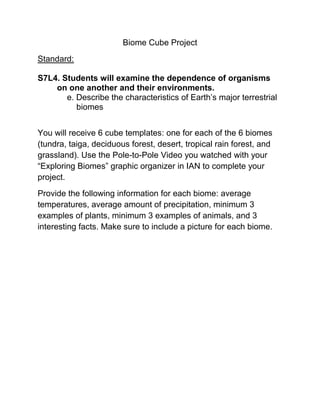Report
Share

Recommended
Climate change adaptation for forestry: learning from recurrent droughts - Ri...

Climate change adaptation for forestry: learning from recurrent droughts - Ri...Climate Change Research Strategy for Primary Industries
More Related Content
What's hot
Climate change adaptation for forestry: learning from recurrent droughts - Ri...

Climate change adaptation for forestry: learning from recurrent droughts - Ri...Climate Change Research Strategy for Primary Industries
What's hot (8)
Climate change adaptation for forestry: learning from recurrent droughts - Ri...

Climate change adaptation for forestry: learning from recurrent droughts - Ri...
More from ShaunaBristol
More from ShaunaBristol (16)
Biome cube activity rubric
- 1. Biome Cube Project Standard: S7L4. Students will examine the dependence of organisms on one another and their environments. e. Describe the characteristics of Earth’s major terrestrial biomes You will receive 6 cube templates: one for each of the 6 biomes (tundra, taiga, deciduous forest, desert, tropical rain forest, and grassland). Use the Pole-to-Pole Video you watched with your “Exploring Biomes” graphic organizer in IAN to complete your project. Provide the following information for each biome: average temperatures, average amount of precipitation, minimum 3 examples of plants, minimum 3 examples of animals, and 3 interesting facts. Make sure to include a picture for each biome.